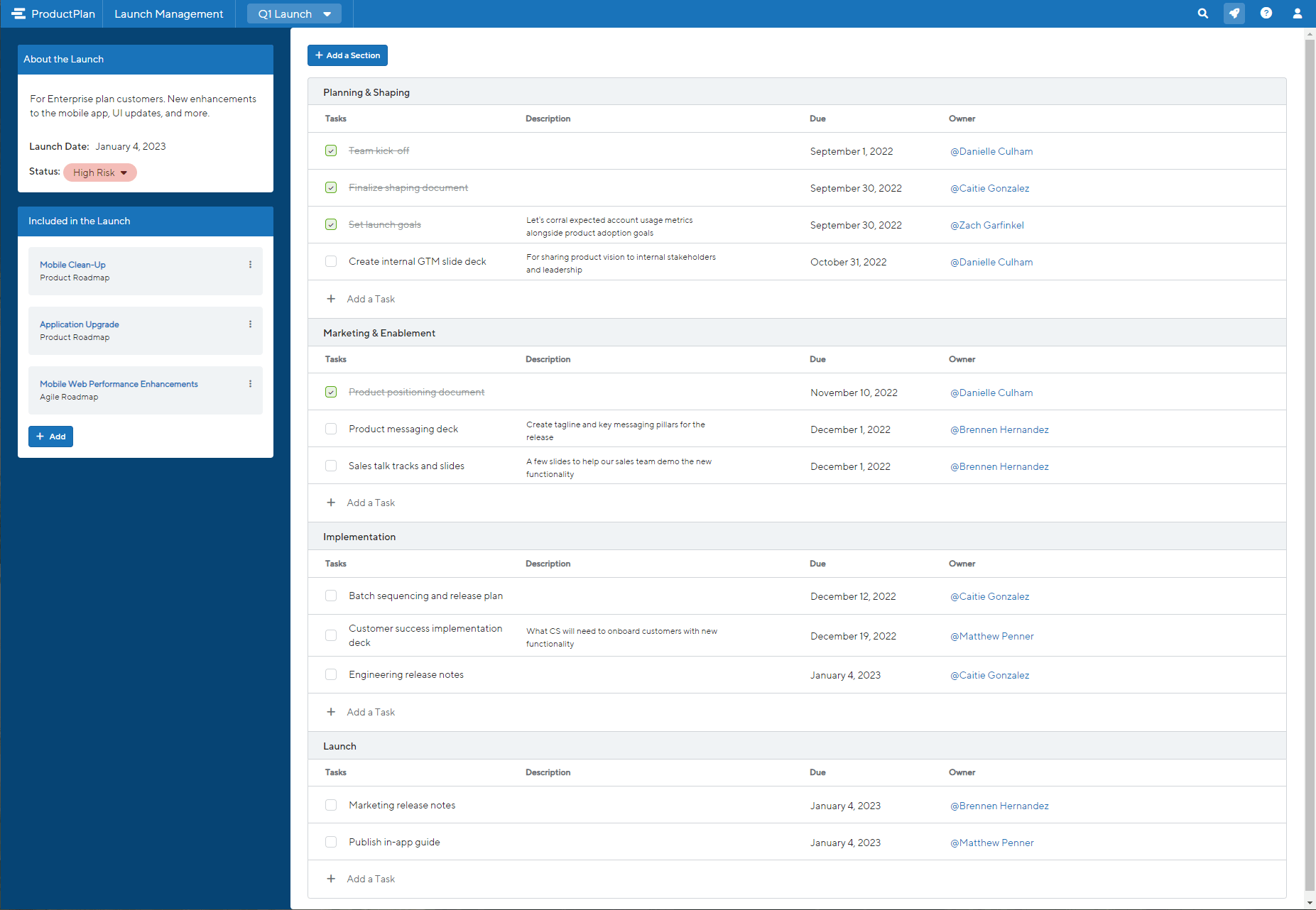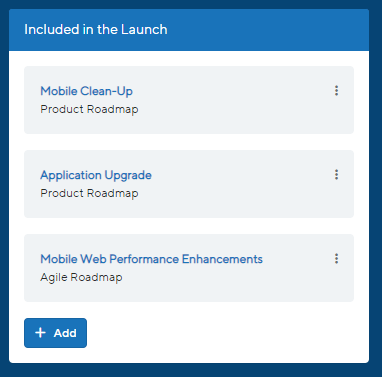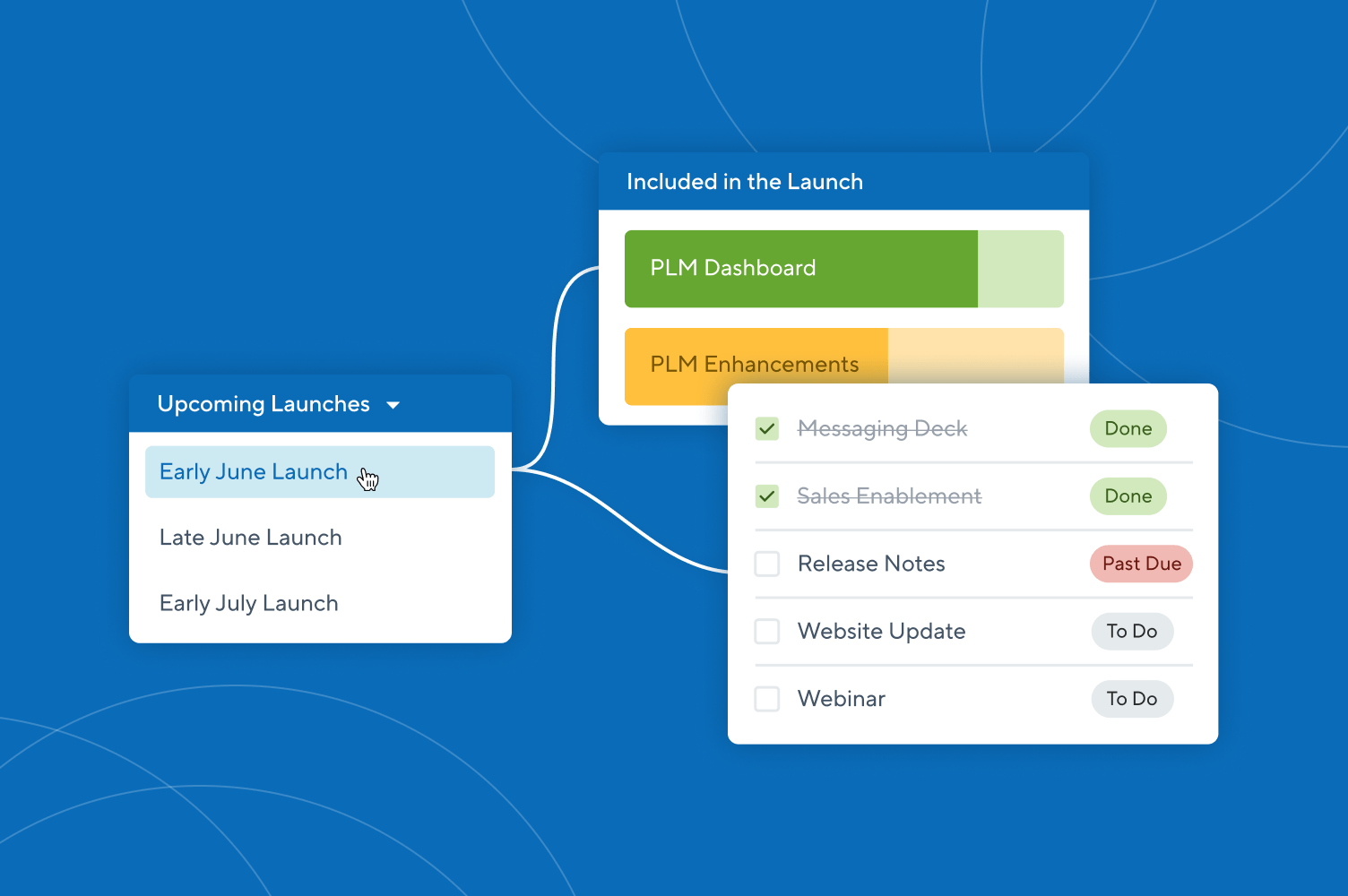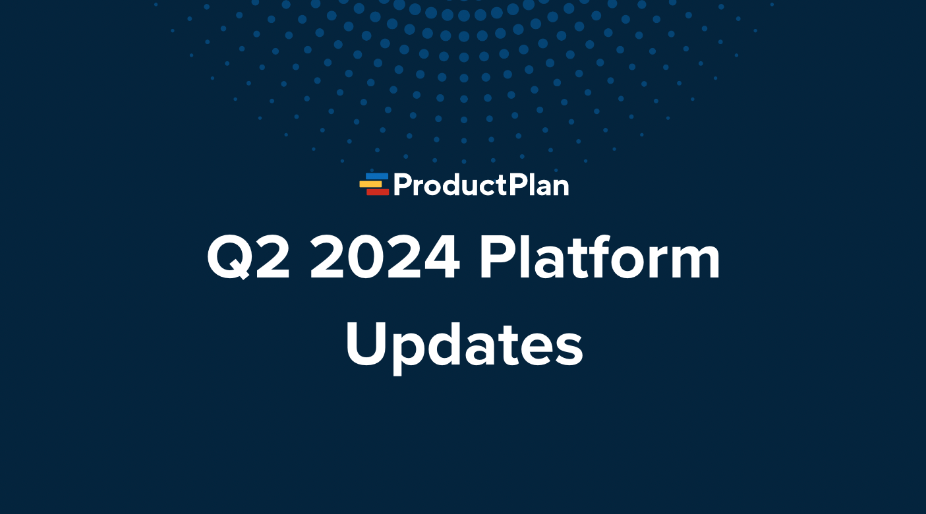The ugly truth is product launches are a messy business. At times, they can be overwhelming, impossible nightmares. There are launch activities to track, expectations to manage, and stakeholders to hold accountable. Product teams carry this burden alone without the help of proper tooling.
Launch Management is a first-of-its-kind tool for product teams that helps you wrangle the chaos of a product launch. We are incredibly excited to show you how you can guarantee launch readiness, all within a single platform. For more, check out our guided product tour of Launch Management functionality provided below.
Today our Launch Management solution enters General Availability as an exclusive Enterprise Plan feature set. For our ProductPlan customers, if you have questions about our pricing plans or want to see a demo, you can reach out to your Customer Success Manager, or you can schedule a demo here.
Or, if you’re new to ProductPlan and want to try everything we offer, including best-in-class roadmapping and tailored launch planning, you can also sign up for our two-week free trial.
But first, let us take a step back and explain how we realized the opportunity for launch management.
So why did we build Launch Management?
Ask any product manager about their launch process, and you will likely hear something like this: “It’s a nightmare. There’s no standard process for go-to-market. It’s confusing for everyone.”
Or maybe something like this: “It’s a nightmare. I’ve never worked for a company that had an airtight GTM process. There’s always a stakeholder who wants to be more in the loop and says there isn’t enough communication.”
Or even this: “Lol, what launch process?”
Disclaimer: These are all actual statements our customers made when we spoke to them about their launch process!
Product managers are some of the most organized people in the world. They must be to rally their entire organization around the product strategy successfully. So it’s telling that such a critical piece of the product strategy—its execution—is described as a trainwreck.
However, it’s not their fault. Launching a new product or feature requires the complex orchestration of multiple moving pieces. It extends beyond the product and engineering teams to include marketing, sales, customer success, legal—the list goes on. It’s one of the few instances where an entire organization collaborates to do a single project simultaneously. Of course, it’s a mess.
What challenges does Launch Management solve?
Many of our customers spoke candidly about their challenges with inconsistent and disorganized launch processes. Our research discovered three core challenges at the heart of the problem.
1. Lack of visibility across teams
There is no single place to check the status of an upcoming launch and any deliverables it requires. Instead, that information is often scattered across documents and minds, spanning teams and, at times, entire departments. To uncover what needs to be done next is to go on a scavenger hunt. The result is wasting valuable time and fraying nerves.
2. Building manual, time-intensive reports to access launch progress
Many product managers are stuck building manual, time-intensive reports to assess launch progress and identify loose ends. Time spent here is time spent away from work product managers want to be doing: talking with customers and collaborating with their dev teams to build new cool things.
3. Inconsistent and disorganized launch processes
And finally, the ad hoc, figure-it-out-as-we-go nature of these proceedings means no two launches follow the same process. Instead, launches are inconsistent and disorganized. Repeating successful launches isn’t easily done. Failed launches have no easy answer to the question, “why didn’t this work?” And every new launch must start from scratch.
In many cases, stakeholders involved in the launch aren’t clear on expectations and therefore default to peppering the launch leader with the dreaded “so what should I do next?” question. Instead of distributing mutual ownership of the launch among all relevant stakeholders, the lion’s share of the responsibility rests with the product team. If the product team doesn’t make sure it happens, it simply doesn’t.
The problem with status quo solutions
These challenges haven’t had great solutions. Yes, you can build a launch process on a house of cards using spreadsheets, slide decks, and a jumbled array of documents. But that leaves you chasing the work when you’d rather be directing the strategy.
To make matters worse, there are no purpose-built tools for launching a new product.
There are plenty of tools that help you organize a project. They might allow you to plan deliverables, assign owners, and create due dates—all of which are useful in planning a product launch. But it’s rare for tools like these to be managed by the product team, and they never live alongside other important pieces of the product puzzle, like the roadmap.
A launch process that’s severed from the product strategy is a dangerous thing. It encourages messy handoffs while creating unintended silos.
Ideally, your product vision will carry from your roadmap to the launch plan. You want every deliverable created—whether a marketing asset, a sales talk track or a customer support article—to demonstrate a firm understanding of the “why” behind the product. If you create these deliverables in a silo, it’s less likely they will leverage important pieces of product knowledge. They may not empathize with key customer pain points, for instance, or show little understanding of the target audience.
The cost of a bad launch
It’s difficult to overstate the cost of a bad launch. There is, of course, the opportunity cost to the product team when things break down. Instead of doing more important work, they must play the role of project manager and hold things together for their go-to-market team.
Occasionally, a launch cobbled together on the fly like this is a success. Even if the road was a painful one. The cost of product diverting their attention to wrangle the chaos might not be felt until later when it becomes clear other opportunities slipped by the wayside while the product team had their hands full.
But more likely, a bad launch means, well, a bad launch. That means your product isn’t being pushed by your enablement team or sold by the sales team because there was no clear direction or ownership over key deliverables. A bad launch might result in poor customer awareness of the new thing you’ve built or, perhaps worse, a betrayal of customer expectations. A bad launch can also result in a delayed launch, meaning less time on the market, generating revenue for the company.
Overall, a launch that flops is painful for everyone involved. It takes a cut from sales expectations. In addition, it hampers the marketing team’s ability to bring in new leads. It steals a vital tool away from customer success in their fight against churn. This reflects poorly on the product team, who tragically may have built the perfect product. The launch just didn’t do it justice.
Thankfully, it doesn’t have to be this way! Let’s dive into an overview of ProductPlan’s new Launch Management solution.
A guided tour of Launch Management
To ensure every launch is a winning launch, you now have Launch Management. With our solution, you can:
- Create thoughtful launch strategies that your entire team can get behind
- Build tailored plans for each launch, assign due dates, and assess progress
- While creating shared ownership of your go-to-market process
The Launch Dashboard: Ditch the hassle of weekly launch reports

Welcome to the Launch Management Dashboard. This is your 10,000-foot view of all upcoming launches in a single place. We designed the Dashboard to wrangle together all the important details you need to see at a glance about every launch you have planned.

Use the Dashboard to see all upcoming launches and their respective launch dates. You can also use the Dashboard to track progress on individual launches, which is calculated automatically according to the percentage of completed deliverables in the Launch Checklist (more on that later).
Based on the progress of your launch and its launch date, you can assign each launch a status: low risk, medium risk, high risk, or launched.
While the Launch Dashboard is fantastic for helping you and your team stay organized in your go-to-market planning, it’s also the perfect place to send executive stakeholders whenever they come sniffing around asking for an update. It houses everything the curious senior executive needs to feel “in the know” about your launch strategy.
And as a bonus, it allows you to sidestep having to create manual, time-intensive reports every week.
The Launch Checklist: Manage the launch strategy, not the work
The Launch Checklist is where a product launch comes together. A successful launch includes a tailored array of deliverables. In some cases, the list may be small. It might only include release notes, a new section in a product support article, and a slide for the sales team.

Other launches might require the kitchen sink. In either case, for a new product or feature to land successfully in your customers’ laps, you need other members of your organization to pitch in and help support.
We designed the Launch Checklist for this purpose. Many product people we work with described how the handoff between the release of a new product and its launch often felt like tossing items over a fence, hoping others would be on the other side to receive them and run. You have complete visibility into every task required to see a launch through to success with the Launch Checklist.

The Launch Checklist has a few purpose-built tools to help you do this. Each item added to the Launch Checklist has a place for a brief description, a due date, and an owner. So, you can assign anyone in your account (both editors and viewers) as a deliverable owner. Upon assigning, that person receives an email alerting them to the required task.
The goal is to create co-ownership of the launch. We’ve heard many horror stories of the one-person launch, where someone on the product team ends up holding the launch together through sheer force of will (likely complimented by a disorganized flurry of ad hoc meetings and one-on-one Slack conversations).
These kinds of launches unravel quickly and come at a significant opportunity cost to the product team, who end up playing project manager and dealing with all the questions from confused stakeholders.
Instead, the Launch Checklist can be your central place to plan a launch tailored to the released product or feature and get buy-in early from your cross-functional partners. And if you give your cross-functional team editor permissions, it’s also a great best practice to have them help you determine which deliverables you commit to as a team.
Consider delegating the customer communication plan to a marketing or customer success person. Have your sales engineer come up with any deliverables needed to train your sales team on how to demo a new feature. These are great ways to encourage others to feel a sense of ownership over the launch. You’ll need their expertise to help guide your new product to market.
All this might beg the question: what should go into your Launch Checklist? There are no hard and fast rules. Every launch will be different and depend on the product itself, your customers, and your organization’s makeup. That said, you can find 20 great ideas for your next product launch checklist here to help get you started.
Connect your launch plans to your roadmap
One of the benefits of having your launch plan in the same platform as your roadmap is it helps ensure your product vision influences your go-to-market deliverables. We make this easy with the “Features Included in the Launch” module found to the left of your Launch Checklist.

Your roadmap houses all kinds of helpful information about your product. Many of our customers use their roadmap to document their roadmap strategy (what they’re building and when) and the why behind the features they prioritize. They will add context to the descriptions within their bars and often link to essential assets like objective documents or customer-facing collateral.
This information is gold for anyone planning a marketing campaign or coming up with sales talk tracks to support the launch. Adding features to your launch allows cross-functional partners easy access to what is on deck for the release and the vital context fueling it. It also encourages team members outside of the product team to read your roadmap because the information there is now actionable.

The connection works both ways. From your ProductPlan roadmap, you can also assign an individual bar or container to a specific launch in Launch Management, allowing you to quickly switch between your strategy and your execution plan with a click.
Try Launch Management today!
Launch Management is available as a part of our Enterprise plan and our two-week free trial. If you’d like to learn more, schedule 45 minutes with us, and we’ll tailor a demo to your unique launch goals and challenges.
We’re looking forward to turning your next product launch into a success!






